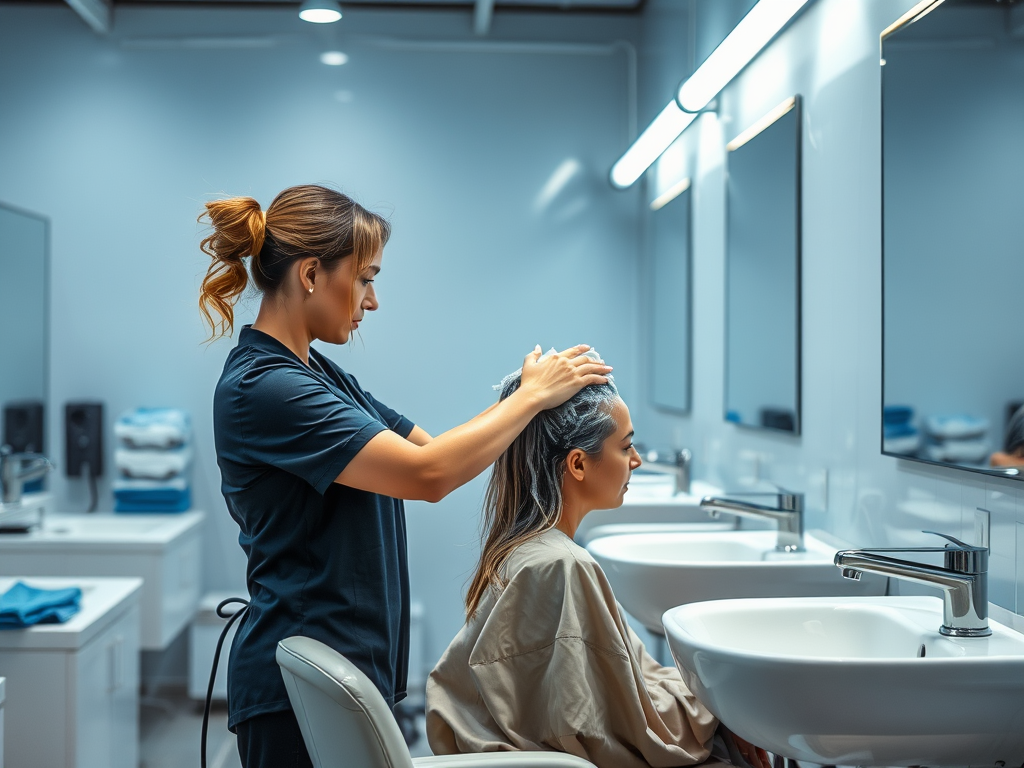The process of dyeing hair is as much an art as it is a science, and one of the most debated topics in this realm is whether you should wash your hair before applying color. Many people have strong opinions about this, and the truth may surprise you. Understanding the right approach to hair washing before dyeing can significantly affect the outcome of your color treatment. In fact, the cleanliness of your hair plays a crucial role in how the dye interacts with your strands. Moreover, both clean and slightly dirty hair come with their own sets of advantages and disadvantages. This article will delve into the nuances of hair washing and dying, disarming common myths and uncovering the best practices to achieve vibrant, long-lasting color.
The Science Behind Hair Dyeing

To truly understand the implications of washing your hair before dyeing, it helps to appreciate the science behind how hair and dye interact. Hair is composed of a protein called keratin, which is designed to protect your strands but can also absorb coloring agents. The condition of your hair can influence how well these coloring agents penetrate. Healthy hair fibers can reflect or absorb light differently than damaged ones, altering the final color result. Furthermore, the porosity of your hair, which is often determined by its condition, can greatly influence how the dye adheres and lasts. Therefore, knowing the balance between washing and preserving your hair’s natural oils is critical for a successful coloring experience.
The Debate: Clean vs. Dirty Hair

The discussion surrounding whether to dye clean or dirty hair is multifaceted, and both sides have valid points worth considering. Dyeing clean hair can ensure that there is no product buildup, allowing the dye to penetrate evenly and efficiently. Clean hair is also free from any residue that could interfere with the bonding process of the dye. On the flip side, some hair professionals advocate for dyeing hair that hasn’t been washed for a day or two, arguing that natural oils protect the hair and scalp. These oils can help shield against irritation and enhance the dye’s effectiveness, leading to a richer color. Each individual’s hair type and dye choice may yield different results, making it essential to evaluate your specific needs and preferences.
Natural oils produced by the scalp serve a critical function in hair health and can be quite beneficial for the dyeing process. These oils act as a barrier that protects the hair and scalp from potential damage and irritation caused by chemical dyes. Additionally, they help enhance dye absorption, allowing for a more uniform color application. Finding the right balance between cleanliness and oiliness is key. On the one hand, excess dirt can interfere with color bonding; on the other, a completely stripped surface may lead to dryness and damage. Here are some factors to consider:
- Natural oils protect the hair from chemical damage.
- Oils can enhance dye absorption for richer color.
- Too much buildup can prevent proper dye adherence.
When to Wash Your Hair Before Dyeing
Knowing the optimal time to wash your hair before dyeing is essential. Many hair colorists recommend washing your hair about 24 to 48 hours before applying dye. This time allows for the accumulation of natural oils, which can act as a protective layer. However, the best approach will depend largely on your hair type and the type of dye you’re using. Below is a concise table summarizing recommendations for different hair types:
| Hair Type | Recommended Washing Time | Notes |
|---|---|---|
| Straight and Fine | 24 hours prior | Less oil retention; may require more time for bonding. |
| Curly and Thick | 48 hours prior | More oils for protection; requires longer wash intervals. |
| Oily Hair | Wash 12 hours prior | Balance oil while avoiding excessive buildup. |
Preparing Your Hair for Dyeing
Preparation is key when it comes to achieving optimal results during the dyeing process. Recommended pre-dyeing treatments can significantly improve hair health and color vibrancy. Begin with a deep conditioning treatment or a hydrating hair mask at least a few days before dyeing to ensure that your hair is well-nourished. Avoid using products with heavy silicones or oils just before dyeing, as these could affect dye uptake. Moreover, it’s essential to avoid excessive heat styling and chemical treatments leading up to your dyeing day. These practices can weaken the hair, making it less receptive to coloring. A well-prepared mane sets the stage for a brilliant dye job!
Conclusion
In summary, the seemingly simple question of whether to wash your hair before dyeing can lead to complex discussions filled with scientific reasoning and personal preference. Clean and dirty hair each has merits, and understanding the role of natural oils along with hair condition can help you make informed decisions. Ultimately, experimenting with your routine can lead you to discover what works best for your unique hair and dyeing goals. The key takeaway is to balance cleanliness with the natural oils in your hair, ensuring optimal results every time you reach for that box of dye.
Frequently Asked Questions
- Should I wash my hair before dyeing?
Yes, it is generally recommended to wash your hair, but the timing matters. - Can I dye my hair without washing it first?
Yes, many professionals suggest dyeing hair that is a day or two dirty for optimal results. - What if my hair is too dirty to dye?
If your hair has excessive product buildup, it’s best to wash it, but try to leave some natural oils. - Does the type of dye affect whether I should wash my hair?
Yes, some dyes are better applied to clean hair, while others perform well on dirty hair due to oil retention. - How can I prepare my hair if I’m planning to dye it?
Consider a deep conditioning treatment a few days before dyeing and avoid excessive heat styling.